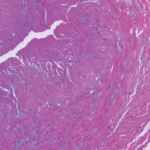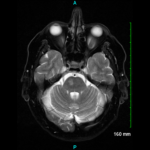Unfortunately, existing studies on methotrexate and tocilizumab as add-on therapies, although high quality and indicative of safety and efficacy, do not allow direct comparisons of the two treatments.
Lara C. Pullen, PhD, is a medical writer based in the Chicago area.
ad goes here:advert-1
ADVERTISEMENT
SCROLL TO CONTINUE
References
- Mukhtyar C, Guillevin L, Cid MC, et al. EULAR recommendations for the management of large vessel vasculitis. Ann Rheum Dis. 2009 Mar;68(3):318–323. Epub 2008 Apr 15.
- Hellmich B, Agueda A, Monti S, et al. 2018 update of the EULAR recommendations for the management of large vessel vasculitis. Ann Rheum Dis. 2020 Jan;79(1):19–30.
- Monti S, Águeda AF, Luqmani RA, et al. Systematic literature review informing the 2018 update of the EULAR recommendation for the management of large vessel vasculitis: Focus on giant cell arteritis. RMD Open. 2019 Sep 16;5(2):e001003. eCollection 2019.


